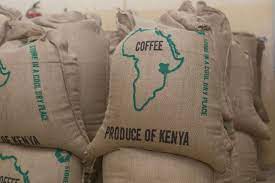Kisii County continues to assert its dominance in coffee sales at the Nairobi Coffee Exchange (NCE), outperforming neighbouring Nyamira County in both production volume and value. The disparity highlights Kisii’s more developed coffee production infrastructure, backed by a significantly larger number of cooperatives and more efficient systems.
With 61 registered coffee cooperatives compared to Nyamira’s 21, Kisii has built a robust organisational base for coffee farming. This structural advantage has enabled the county to produce and sell higher volumes of coffee consistently. During the 2023/2024 season, Kisii produced 982,930 kilograms of coffee, while Nyamira recorded a lower output of 656,900 kilograms.
The sales figures from the same period underline Kisii’s leadership in the sector. Kisii generated Ksh 488.68 million in revenue from coffee sales, compared to Ksh 327.24 million earned by Nyamira. This difference not only reflects Kisii’s larger production base but also its ability to attract better prices through stronger cooperative marketing and aggregation strategies.
As the 2024/2025 season progresses, Kisii maintains a commanding lead. So far, the county has sold 155,401 kilograms of coffee, generating Ksh 123 million. In contrast, Nyamira has sold 93,135 kilograms, earning Ksh 73 million. These figures indicate that Kisii is currently producing approximately 67% more coffee and earning 70% more revenue than Nyamira.
The ongoing performance reinforces the correlation between a well-developed cooperative network and higher returns in the coffee sector. Kisii’s ability to organise farmers, streamline processes, and market coffee effectively positions it as a regional leader in specialty crop production.
With the season ending on September 30th, 2025, both counties are expected to boost their sales volumes. However, unless Nyamira significantly scales up production or improves marketing mechanisms, Kisii is poised to maintain its edge.
The comparison between the two counties illustrates the importance of investment in farmer organisation, cooperative management, and infrastructure development in driving agricultural success. For counties aiming to increase their competitiveness in the coffee sector, Kisii’s model offers a strong example of how coordination and structure can translate into real economic gains.

